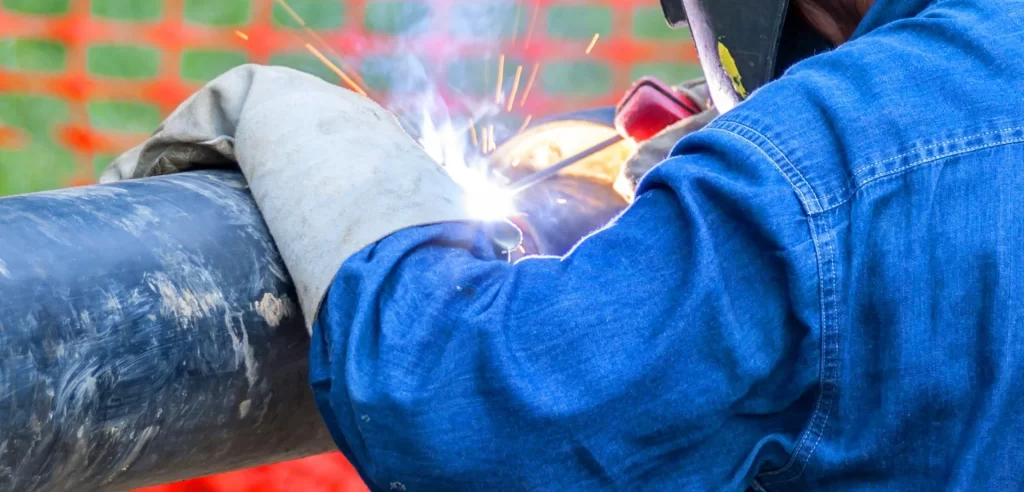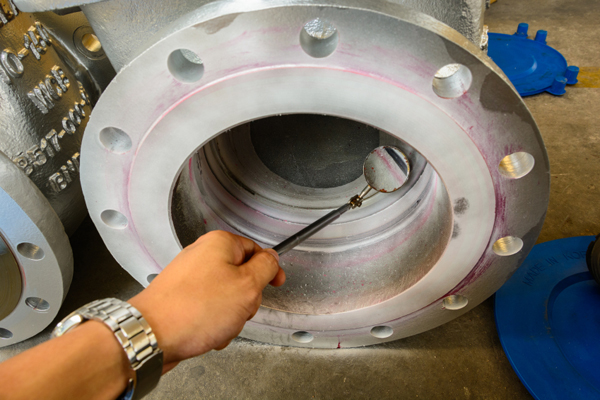Revealing the Diverse Variety Of Welding Services and Their Benefits
As markets proceed to evolve and demand precision in their production procedures, the relevance of welding solutions has actually become progressively obvious. From the versatility of arc welding to the efficiency of MIG welding, and the complex job accomplished with TIG welding to the precision of laser welding, the array of welding techniques readily available is vast.
Sorts Of Welding Provider
Among the numerous kinds of welding services readily available, each deals one-of-a-kind benefits and applications in various industries. One common kind is MIG welding, likewise called Gas Steel Arc Welding (GMAW), which uses a cable electrode to sign up with metals together. MIG welding is valued for its rate and adaptability, making it ideal for a vast array of products consisting of light weight aluminum, steel, and stainless-steel. One more extensively used approach is TIG welding, or Gas Tungsten Arc Welding (GTAW), which uses a non-consumable tungsten electrode to produce a tidy and exact weld. TIG welding is preferred for its capacity to produce top notch welds in slim materials, making it suitable for sectors such as aerospace and auto.
Additionally, there is Stick welding, or Shielded Steel Arc Welding (SMAW), which is known for its simplicity and efficiency, specifically in gusty or outdoor problems. This method is commonly utilized in building and construction and pipe welding. Lastly, there is Flux-Cored Arc Welding (FCAW), which is a flexible process appropriate for thick products and can be used in both semi-automatic and automated applications. Each kind of welding service has its staminas and is selected based on variables such as product type, density, and the certain demands of the project available.
Benefits of Arc Welding
Arc welding uses a multitude of advantages that cater to different commercial demands and needs. Furthermore, arc welding is known for its high welding speeds, which can significantly boost performance in making procedures.
An additional key benefit of arc welding is its capacity to develop strong and resilient welds. The heat generated throughout the process aids to produce a metallurgical bond between the base steels, causing welds that are able to stand up to high levels of tension and pressure. Arc welding additionally creates specific and tidy welds, decreasing the need for additional completing work. In general, the advantages of arc welding make it an important device for different sectors aiming to attain top notch welds effectively.
Benefits of MIG Welding
With a concentrate on performance and sturdiness in welding procedures, MIG welding provides a distinctive collection of benefits that complement the versatility and toughness found in arc welding. MIG welding, or Gas Metal Arc Welding (GMAW), is understood for its rate and ease of use. The process entails feeding a cable electrode with a welding gun, which is after that melted and made use of to join the base products with each other. One of the key benefits of MIG welding is its high welding rates, making it a recommended selection for projects that need quick turnaround times.
In addition, MIG welding produces tidy welds with minimal splatter, reducing the need for extensive cleaning after the welding process. The adaptability of MIG welding allows for welding a large range of materials, including aluminum, stainless-steel, and light steel. This flexibility makes MIG welding suitable for various sectors, from auto to building.
In addition, MIG welding is known for its high deposition rates, meaning even more material can be transferred in a much shorter quantity of time contrasted to other welding procedures. This causes boosted performance and cost-effectiveness for projects that call for huge volumes of welds. Generally, the benefits of MIG welding make it a valuable technique for achieving resilient and efficient welds throughout different applications.

Checking Out TIG Welding Conveniences
TIG welding, additionally recognized as Gas Tungsten Arc Welding (GTAW), supplies an unique collection of advantages that accommodate precision and control in welding applications. One of the key benefits of TIG welding is its capacity to create top notch, clean welds without the demand for filler product. This makes it ideal for welding thin materials where looks and accuracy are important, such as in the aerospace and automotive markets. Additionally, TIG welding gives outstanding control over the heat input, leading to marginal distortion of the work surface.
Furthermore, TIG welding can be used on a wide variety of metals, consisting of stainless-steel, aluminum, copper, and titanium, making it a functional choice for different welding tasks. The procedure also permits for welding in various placements, offering flexibility in difficult welding scenarios. Furthermore, TIG welding generates welds with exceptional stamina and stability, making it a recommended option for critical applications where weld quality is extremely important. Generally, the control, precision, and versatility provided by TIG welding click here to read make it a useful method in the welding market (Welding Inspection Service).
Benefits of Laser Welding

An additional benefit of laser welding is its flexibility in dealing with a variety of materials, including metals, plastics, and site web even different products. This adaptability makes laser welding appropriate for diverse markets such as automobile, aerospace, electronics, and medical gadgets. The non-contact nature of laser welding likewise decreases contamination, making it a tidy and eco pleasant welding approach.
In addition, laser welding makes it possible for detailed and intricate weld geometries that might be challenging to achieve with traditional welding techniques. This ability opens up brand-new style opportunities and allows for the production of lighter and extra ingenious components - Welding Inspection Service. Generally, the benefits of laser welding make it a preferred option for lots of production applications looking for high precision and performance
Conclusion

Arc welding gives solid and long lasting welds, while MIG welding supplies efficiency and convenience. TIG welding ensures specific and tidy welds, and laser welding offers high accuracy and rate.
From the adaptability of arc welding to the effectiveness of MIG welding, and the detailed job achieved through TIG welding to the accuracy of laser welding, the array of welding methods available is large. One typical type is MIG welding, likewise understood as Gas Steel Arc Welding (GMAW), which utilizes a cable electrode to join metals with each other. Furthermore, arc welding is known for its high welding rates, which can dramatically raise efficiency in producing processes.With an emphasis on performance and toughness in welding processes, MIG welding presents an unique collection of advantages that match the convenience and strength discovered in arc welding.TIG welding, likewise known as Gas Tungsten Arc Welding (GTAW), offers a distinctive collection of benefits that cater to precision and control in welding applications.